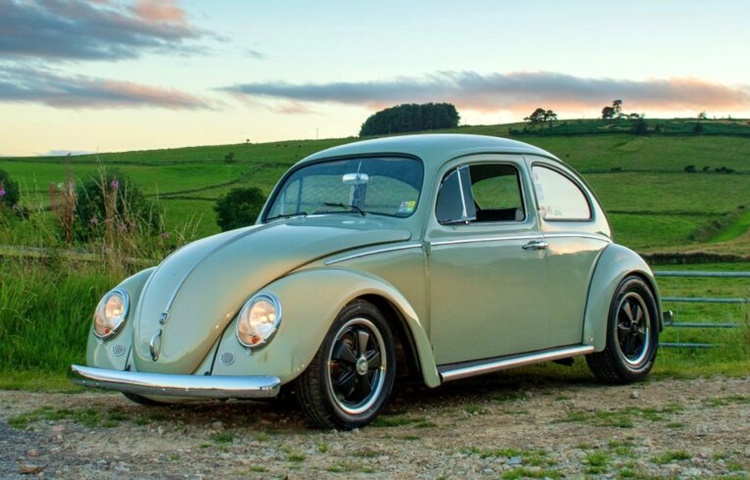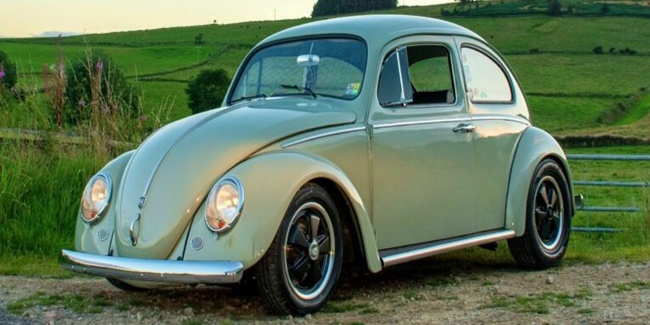Here’s 7 Interesting Facts You Probably Didn’t Know About Volkswagen Beetle
VOLKSWAGEN BEETLE – Here are seven (7) interesting facts you probably didn’t know about the iconic Volkswagen Beetle.
It would be quite a daunting task to discover another vehicle with a model name as universally recognized and enduring as the Volkswagen Beetle. The design of the Beetle, which was crafted by Ferdinand Porsche, had already been established many years before it made its way to American shores.
In 2014, Volkswagen celebrated the 65th anniversary of the Beetle in the United States, having successfully sold an impressive 5.5 million models since its initial importation.

Here are seven interesting facts about the Volkswagen Beetle:
Fact #1: The Volkswagen Type 1
Initially, the car was not referred to as the “Beetle.” It was originally known simply as the “Type 1” or “the Volkswagen.” Even before its international debut, Germans fondly called it the “Kafer” or “Beetle.” Adolf Hitler had ordered its creation to provide affordable transportation for average German families. A limited number of models were produced for Nazi party officials during World War II, and mass production began after the war ended.
Fact #2: It Can Float
The original Volkswagen Beetle had the unique ability to float, albeit briefly. This was due to its sealed steel bottom with no exposed components underneath. Volkswagen even created a television commercial demonstrating the Beetle’s floating capability, with a disclaimer stating, “The VW will definitely float, but it will not float indefinitely.”
Fact #3: A Favorite Among the Counter-Culture
In the 1960s, as the counterculture movement gained momentum, the Beetle’s popularity soared. Its simple and charming design, coupled with its affordable price (under $2,000), made it a hit. It also offered excellent gas mileage, although its earlier models were designed to travel at speeds of around 62 to 65 mph.
Fact #4: The Original Stayed Around
Production of the first-generation beetle ceased in Germany in 1977, with production shifting to Brazil and Mexico. The Brazilian factory continued to manufacture Beetles until 1986, while the Mexican factory continued production until 2003. However, the Latin American models were never exported to the US, which had the replacement Rabbit (known as the Volkswagen Golf elsewhere).
Fact #5: Volkswagen New Beetle
In 1998, Volkswagen brought back the Beetle name, calling it the “New Beetle” to distinguish it from the original. This marked the second of three distinct “Beetle” models ever created, though its connection to the original was mainly in the name. The Volkswagen New Beetle borrowed design elements from the earlier model, including the iconic flower holder on its dashboard. Despite its resemblance to the original, the New Beetle was built on the same front-wheel-drive platform as the VW Golf and was in production from 1997 to 2011.
Fact #6: New Is Old Again
When introducing a successor for the New Beetle, Volkswagen chose to revert to simply calling it the “Beetle.” Introduced in the US market in 2012, the latest iteration shares its platform with the Volkswagen Jetta and is larger than both earlier Beetle models. Similar to the New Beetle, the current Beetle is front-engine and front-wheel drive, offering modern engine and transmission options, as well as the latest in-cabin technologies. It also became the first US-spec Beetle to offer a diesel engine.
Fact #7: Sales Leader
The current Beetle falls into the category of a two-door specialty coupe and convertible. In 2013, Beetle sales exceeded 43,000 units in the United States alone, making it one of the most popular models among Volkswagen’s 11-model lineup. However, sales began to decline in subsequent years and are now less than half of their peak during this generation. Consequently, Volkswagen decided to discontinue Beetle production in 2019, marking the end of an 80-year journey since the original model’s introduction.

